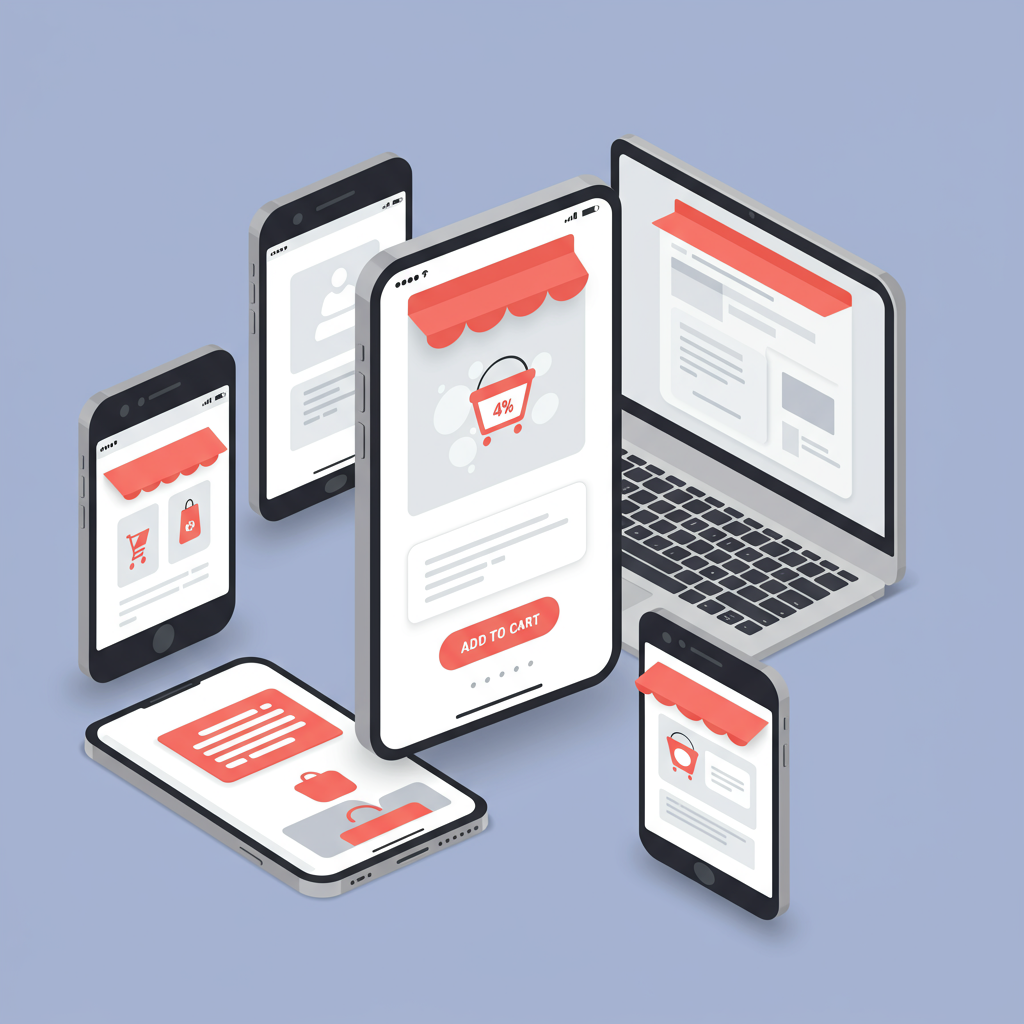Unlocking Conversions in a Mobile-Dominated World
As a Shopify merchant, I’ve seen firsthand how crucial it is to adapt to the ever-evolving digital landscape.
The world has undeniably gone mobile. Our customers are browsing, discovering, and purchasing on their smartphones more than ever before.
In fact, statistics consistently show that over half of all e-commerce traffic now originates from mobile devices.
If your Shopify store isn’t optimized for these users, you’re not just missing out on potential sales; you’re actively deterring them.
That’s why I’ve become a staunch advocate for a mobile-first design strategy.
It’s not just about making your desktop site shrink to fit a smaller screen, which is a common misconception.
Instead, it’s about designing for the smallest screen first, prioritizing content and functionality for mobile users, and then scaling up for larger displays.
This approach forces you to be ruthless with your content and design choices, ensuring only the most essential elements are present.
On a small screen, every pixel counts. You need to identify your core message, your most important products, and your essential calls to action.
Another critical principle is speed. Mobile users are notoriously impatient; slow loading times are a death knell for conversions.
I always recommend optimizing images, leveraging browser caching, and minimizing code to ensure your pages load in a flash.
Your choice of Shopify theme is absolutely crucial in this mobile-first journey.
Always select a theme that is inherently responsive, meaning it automatically adjusts its layout and elements to fit any screen size.
Before committing, I always test theme demos extensively on my own phone, tablet, and even a friend’s device to see how it performs.
High-resolution images are fantastic for showcasing your products, but not at the expense of page load speed.
Shopify does a decent job of optimizing images automatically, but I still recommend compressing your images before uploading them.
Tools like TinyPNG or Compressor.io can significantly reduce file sizes without noticeable loss in quality.
Mobile navigation needs to be intuitive, simple, and easy to use with a thumb.
The ubiquitous hamburger menu (those three horizontal lines) is your best friend for tucking away secondary navigation links.
Ensure your primary navigation, like ‘Shop’ or ‘Categories,’ is immediately accessible.
Your call-to-action buttons, such as ‘Add to Cart’ or ‘Buy Now,’ must be large enough to be easily tappable.
Avoid placing them too close to other elements, which can lead to accidental clicks.
Product pages are conversion hotspots, and they need special attention on mobile.
Keep product descriptions concise and scannable, using bullet points for key features.
Use high-quality, zoomable product photos that clearly show the item from multiple angles.
The checkout process is where many potential sales are lost due to friction.
I always strive to streamline it as much as possible for mobile users.
Offer guest checkout options to avoid forcing new customers to create an account immediately.
Enable autofill for address fields and integrate popular mobile payment options like Shop Pay, Apple Pay, or Google Pay.
I can’t stress this enough: test, test, test! Your mobile-first design isn’t complete until it’s been thoroughly tested.
Test your store on various devices, screen sizes, and operating systems.
Use Shopify’s built-in mobile preview, but also check it on actual physical devices.
Explore Shopify’s App Store for mobile optimization tools. There are apps for image compression, speed optimization, and even mobile-specific pop-ups.
Don’t forget accessibility. Ensure sufficient color contrast, readable font sizes, and clear focus states for keyboard navigation.
Once your mobile-first store is live, monitor its performance closely.
Use Shopify Analytics and Google Analytics to track mobile traffic, bounce rates, conversion rates, and user behavior.
Continuously iterate based on the data you collect. A mobile-first strategy is an ongoing process, not a one-time fix.
What are your biggest challenges when optimizing your Shopify store for mobile?
Embracing a mobile-first approach isn’t just a trend; it’s a fundamental shift in how we should think about e-commerce.
It’s about putting your customer’s experience first, no matter how they choose to shop.
By prioritizing mobile, you’re not just improving your mobile conversions; you’re creating a more efficient, faster, and user-friendly experience for everyone.
Start optimizing today, and watch your conversions grow as your store becomes truly mobile-ready.






